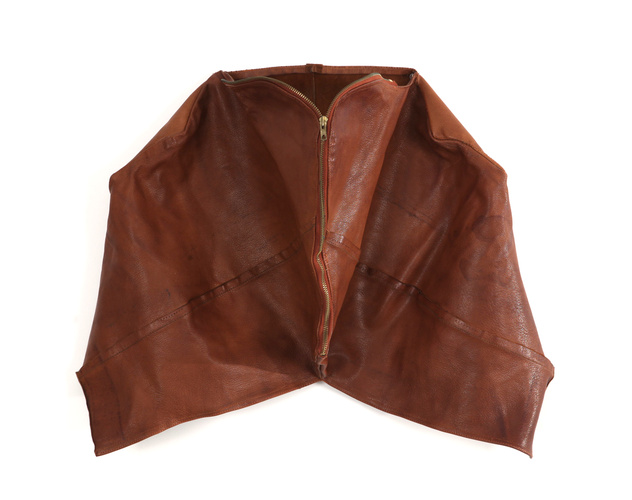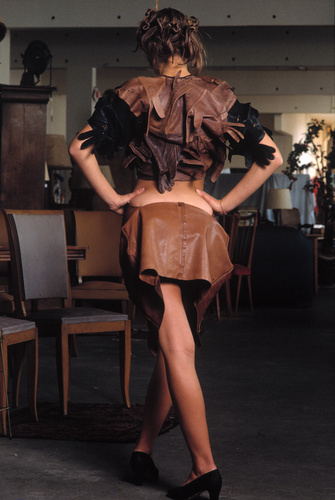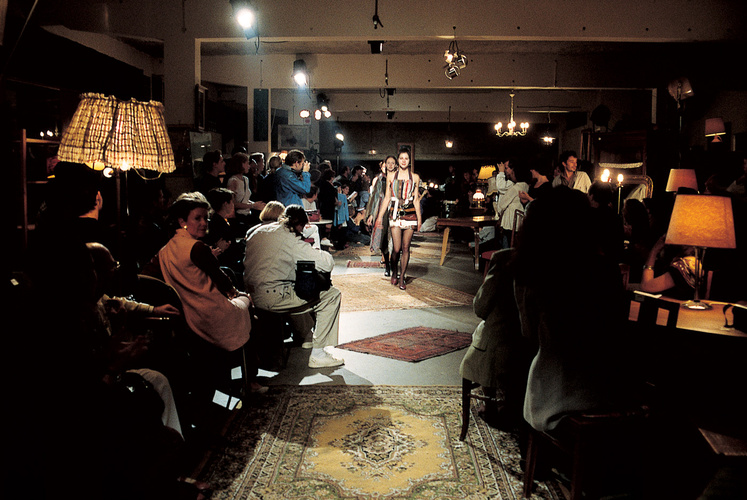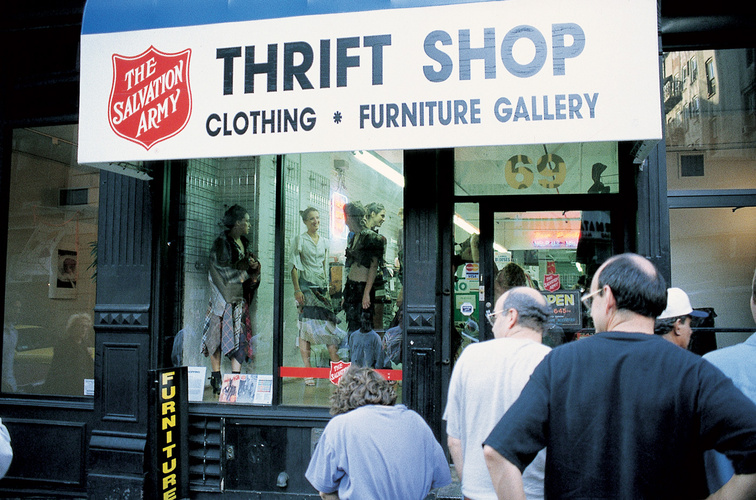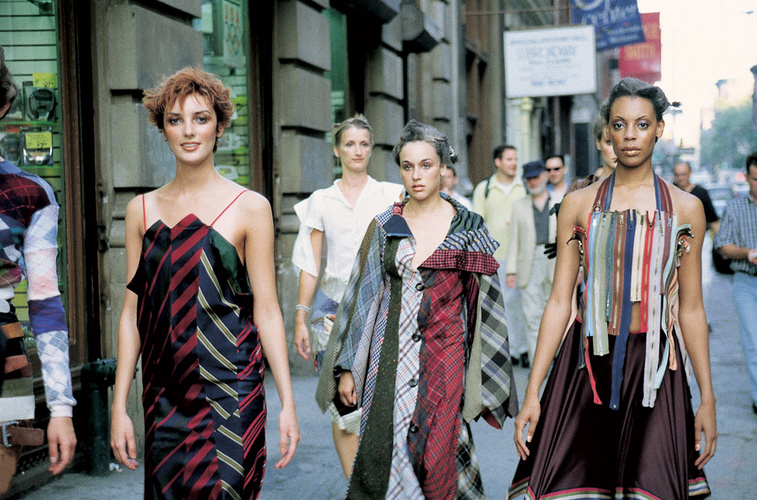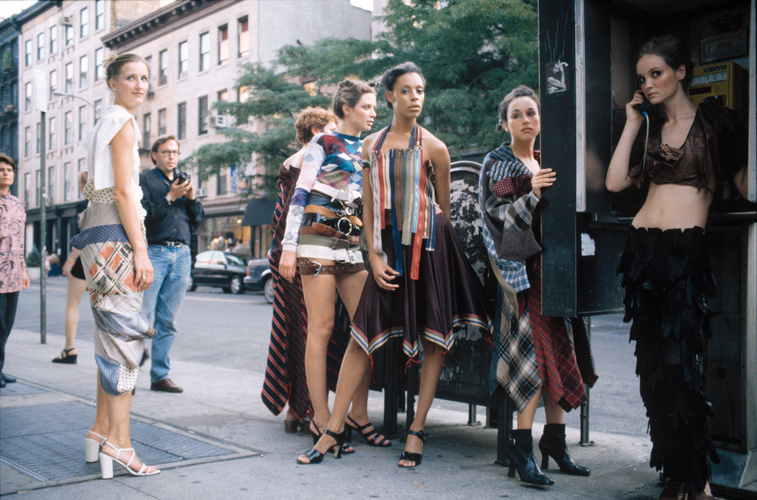Identity + Refuge - Bolero and Mini-skirt
Date:
1995
Ref:
0427.02 / 0427.01
Matériaux:
Leather gloves, leather jacket sleeves
Dimensions:
Bolero: 45 x 80 cm / Skirt: 50 x 60 cm
Exhibition history:
2010 CCANW, UK; 2008 Hiroshima City Museum of Contemporary Art, Japan; 2009 Plymouth Arts Centre, UK; 1998 Museum of Contemporary Art Sydney, Australia; 1996 Dietch Projects New York, USA ; 1995 Salvation Army Paris, France
Courtesy:
Lucy Orta in co-creation with residents of the Salvation Army Cité de Refuge Paris. Photography Marie Clérin
Identity + Refuge is the title of a co-creation workshop Lucy Orta conducted with residents of the Salvation Army Cité de Refuge hostel designed by Le Corbusier in the 13th district of Paris.
The four-month workshop came about thanks to the director of the Salvation Army Cité de Refuge who had witnessed the positive responses to Lucy Orta’s ‘Refuge Wear’ sculpture that were part of the exhibition ‘Art Fonction Sociale!’ in 1993. Lucy was invited back to imagine a series of creative workshops with the hostel residents. As the residents had explained, one of their greatest losses, along with their homes, was their sense of identity in a city that had no place for them. They felt isolated and their lives lacked productivity and creativity.
Adjacent to the hostel was the Salvation Army’s warehouse full of donated clothing and accessories, which were sorted and sold in the thrift store. Lucy chose to use this raw material as a starting point for a ‘transformation workshop’. She established a drop-in workshop in the basement buanderie (laundry room) and collected items of clothing that would otherwise be sent to landfill either because they were no longer fashionable or they were too worn out. Here the discarded clothes could be repurposed into new items of clothing. The initial idea was to create a tailor-made wardrobe for each resident who would otherwise have no choice but to wear another person's clothes. The transformation workshops would offer a means for residents to reconsider their identity and reclaim their self-esteem by creating their own garments.
Over the weeks the process changed because it became apparent that most people felt uncomfortable working on such a personal level - a lack of confidence made it difficult for them to make choices directly concerning their desires and so they began making clothes for imaginary wearers. The method of creation Lucy adopted was to analyse the morphology of an ‘abandoned’ garment, to take it apart and sort the pieces into component parts, and then re-stitch them into new entities with minimum waste. Old worn socks with holes in the heels were salvaged to create the patchwork Argyle “pull-chaussette”; tiny kid-leather gloves were unpicked and flattened out to create a “bolero” and “hipster pant” set; old leather belts were stitched in rows, from large-to-small size to form the “mini-jupe”. This ‘bricolage’ process established a parallel between the new lease of life given to the abandoned clothing and the new lease of hope experienced by the residents.
The resulting collection of garments was presented in two catwalk shows. The first took place in the Salvation Army thrift store in Paris in 1995 during Paris Fashion Week, to great acclaim. Many of the Salvation Army staff assisted with its staging, repurposing old lamps and radios for the lighting and sound, and arranging furniture and rugs to create a cosy atmosphere for the guests. The second catwalk took place from the Salvation Army thrift store on Spring Street and through the streets of Soho as part of the exhibition ‘Shopping’ at Deitch Projects on Grand Street, New York, in 1996.

